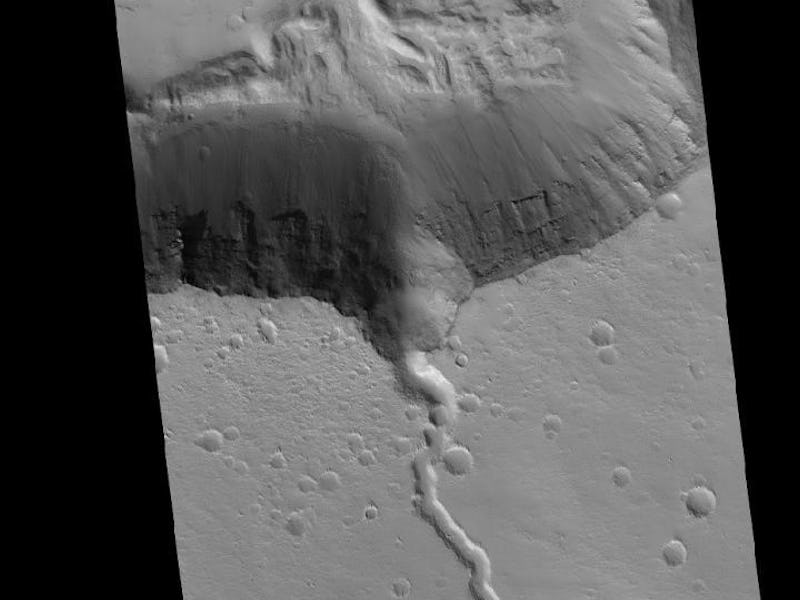Unique Volcano Shows Mars Has an Earth-Like Complexity

Lava flows from the Martian volcano Elysium are showing scientists that the mineral makeup of Mars is actually way more complex than originally believed. The planet continues to more closely resemble the Earth, as opposed to a dry and lifeless body like the moon.
Elysium is the second-largest volcanic complex on Mars. It’s twice as tall as Mount Everest, and it’s also potentially still active. Now, scientists from Louisiana State University have discovered that its chemical composition may have changed significantly since its younger days — it’s almost singularly low in radioactive thorium and potassium compared to other regions of Mars. The new findings were published Friday in the journal Scientific Reports.
“Because thorium and potassium are radioactive, they are some of the most reliable geochemical signatures that we have on Mars,” first author David Susko said in a press release. “They act like beacons emitting their own gamma photons. These elements also often couple in volcanic settings on Earth.”
Elysium could have been chemically altered by ancient glaciers. Or maybe it’s simply different because the geochemical properties of Martian volcanoes are more diverse that we expected. There’s so much scientists don’t know about the planet’s early history that it’s unclear why the volcano is like this, but it’s vital to figure that out if humans are going to, you know, responsibly put astronauts anywhere near it.
The lava flows were so literally hot and heavy that their weight caused different regions of the planet’s mantle to melt at different temperatures, making for a very complex, very interesting geological portrait. Does this mean Mars might have potentially been warm enough to support larger bodies of liquid water — and perhaps more complex bacterial life — than we believed? Maybe.
“We determined that while there might have been water in this area in the past, the geochemical properties in the top meter throughout this volcanic province are indicative of igneous processes,” Susko said in the press release. “For decades … [w]e had a very simple view of the red planet. But the more we look at Mars, the less moon-like it becomes. We’re discovering more variety in rock types and geochemical compositions, as seen across the Curiosity Rover’s traverse in Gale Crater, and more potential for viable resource utilization and capacity to sustain a human population on Mars. It’s much easier to survive on a complex planetary body bearing the mineral products of complex geology than on a simpler body like the moon or asteroids.”
The next step is to conduct computational simulations testing various explanations for Elysium’s unique chemistry. Until we can safely get humans within range, though, we can at least still keep practicing here at home.